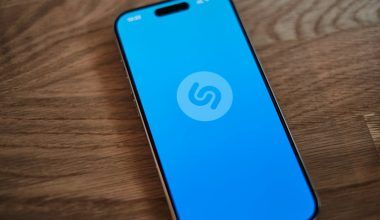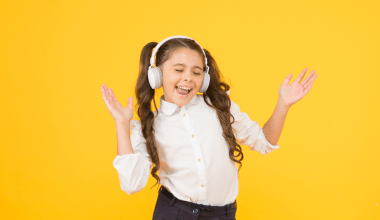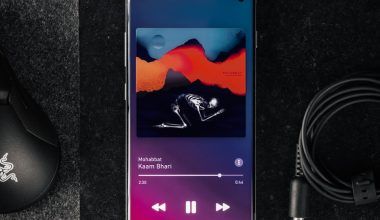In the world of music, especially in digital content creation, the term “royalty-free music” is frequently encountered. Understanding what it means, its benefits, and how to use it can greatly benefit content creators, musicians, and businesses alike. This blog will delve into the concept, usage, and advantages of this type of music licensing.
Defining Royalty-Free Music
This music refers to a type of licensing agreement where the user pays a one-time fee to use the music without needing to pay ongoing royalties or additional fees each time the music is used. This is different from other types of licensing where the user might have to pay royalties based on the number of times the music is played or used in different contexts.
Key Features
- One-Time Payment: Users pay once and can use the music indefinitely.
- No Ongoing Royalties: No additional fees based on usage.
- Versatile Usage: Can be used in various projects like videos, podcasts, games, and more.
- Wide Availability: A vast library of such tracks is available online.
Common Misconceptions
- Not Always Free: Despite the name, this type of music often requires an initial payment.
- Not Public Domain: These tracks are not the same as music in the public domain; it is still protected by copyright.
Benefits of Using Royalty-Free Music
Cost-Effective
One of the biggest advantages is cost-effectiveness. Paying a one-time fee instead of recurring royalties can save significant amounts of money, especially for content creators who use music frequently.
Legal Peace of Mind
Using these tracks ensures that you are legally compliant. This eliminates the risk of copyright infringement and potential legal disputes, which can be both costly and damaging to your reputation.
Ease of Access and Use
There are many platforms where you can easily find and purchase these tracks. These platforms often provide high-quality music across various genres, making it easy to find the perfect fit for your project.
Flexibility
This type of music can be used in a variety of projects. Whether you are making a YouTube video, creating a podcast, developing a game, or producing a commercial, it offers the flexibility you need.
How to Use Royalty-Free Music
Step 1: Identify Your Needs
Determine the type of music that best suits your project. Consider the mood, genre, and duration of the track you need.
Step 2: Find a Reputable Source
There are many websites that offer these tracks. Some popular platforms include:
- AudioJungle
- Epidemic Sound
- Artlist
- Pond5
- Shutterstock Music
Step 3: Purchase the Music
After finding the perfect track, proceed with the purchase. Ensure you read and understand the licensing agreement. Most platforms offer simple, straightforward processes for buying and downloading music.
Step 4: Use in Your Project
Once purchased, you can download the music file and use it in your project as specified in the licensing agreement. Be sure to follow any attribution requirements if they apply.
Step 5: Keep Records
Maintain records of your purchases and licensing agreements. This will be useful if any legal issues arise in the future.
Can Royalty-Free Music Be Used for Creating a Song?
Using Royalty-Free Music in Song Production
This type of music can be used in song production, but there are important considerations and limitations to keep in mind:
- License Agreement: Ensure that the license agreement allows for the music to be used in song creation. Some licenses may restrict this type of use.
- Attribution: If required, proper attribution must be given to the original creator of the music.
- Creative Commons Licenses: Some royalty-free music comes with Creative Commons licenses, which may have specific conditions for use, including non-commercial use only.
Benefits in Song Production
- Cost Savings: Using this music can reduce production costs significantly, especially for independent artists.
- Creative Flexibility: Artists can experiment with different sounds and genres without the financial burden of traditional licensing fees.
Legal Considerations
- Copyright: The original composer retains the copyright, meaning the music cannot be claimed as original work by the new creator.
- Distribution: Ensure that the royalty-free music license covers distribution rights for the song.
Practical Tips
- Read the License Carefully: Understand the limitations and allowances of the license.
- Combine with Original Content: Use royalty-free music as a background or a sample combined with original compositions for a unique sound.
- Seek Professional Advice: If unsure, consult with a music licensing expert to ensure compliance.
Case Studies: Successful Use of Royalty-Free Music
YouTube Content Creators
Many successful YouTube content creators use royalty-free music to enhance their videos. Channels like Casey Neistat and Peter McKinnon have utilized such tracks to great effect, creating engaging and professional content without worrying about copyright strikes.
Indie Game Developers
Indie game developers often turn to royalty-free music to keep production costs down while ensuring high-quality soundtracks. Games like “Stardew Valley” have used such music to create immersive experiences.
Corporate Videos
Businesses use this type of music in corporate videos, presentations, and advertisements. This helps maintain a professional image while keeping production costs manageable.
Types of Royalty-Free Music Licenses
Standard License
A standard license typically covers personal use and small-scale commercial projects. This is suitable for YouTube videos, podcasts, and small business advertisements.
Extended License
An extended license allows for broader use, including large-scale commercial projects, films, and television. This type of license is more expensive but offers greater flexibility.
Multi-Use License
A multi-use license allows the buyer to use the music track in multiple projects. This is ideal for content creators who produce a high volume of content.
Legal Considerations
Understanding Copyright
Even though you are purchasing a royalty-free license, the music is still protected by copyright. This means you cannot claim it as your own or redistribute it without permission.
Attribution Requirements
Some royalty-free music requires attribution. This means you need to credit the artist in your project. Make sure to read the licensing agreement to understand the attribution requirements.
Compliance with Platform Policies
Ensure that the use of this music complies with the policies of the platform where you are publishing your content. For example, YouTube has specific guidelines regarding music usage.
Common Questions About Royalty-Free Music
Can Royalty-Free Music Be Used for Commercial Projects?
Yes, this music can be used for commercial projects. However, the type of license you purchase may determine the scope of usage. Always check the licensing agreement to ensure compliance.
Is Royalty-Free Music of High Quality?
Yes, there are many high-quality tracks available. Reputable platforms curate their libraries to ensure they offer professional-grade music suitable for various projects.
Do I Need to Credit the Artist?
It depends on the licensing agreement. Some of this music requires attribution, while others do not. Always read the terms of the license to understand your obligations.
Can I Edit Royalty-Free Music?
Most licenses allow for some form of editing, such as cutting, looping, or adding effects. However, significant alterations may be restricted. Always check the license for specific details.
Conclusion
This type of music offers a cost-effective, flexible, and legally sound solution for incorporating music into your projects. Whether you are a content creator, business, or indie game developer, understanding and utilizing this music can enhance your work and ensure you remain compliant with copyright laws. By following the steps outlined in this guide, you can confidently use this music to elevate your content and connect with your audience.
For further reading, explore these related articles:
- What is YouTube Content ID?
- Deliver My Tune’s Exciting New Services!
- Know the Ways to Get the Music Sync Licensing
- What is Performance Royalty?
By understanding and leveraging this type of music, you can ensure your projects are enriched with high-quality soundtracks while maintaining legal compliance and budget efficiency. Whether you are a novice or a seasoned professional, royalty-free music can provide the perfect solution for your creative needs.
For additional resources on music marketing and distribution, visit Deliver My Tune.






